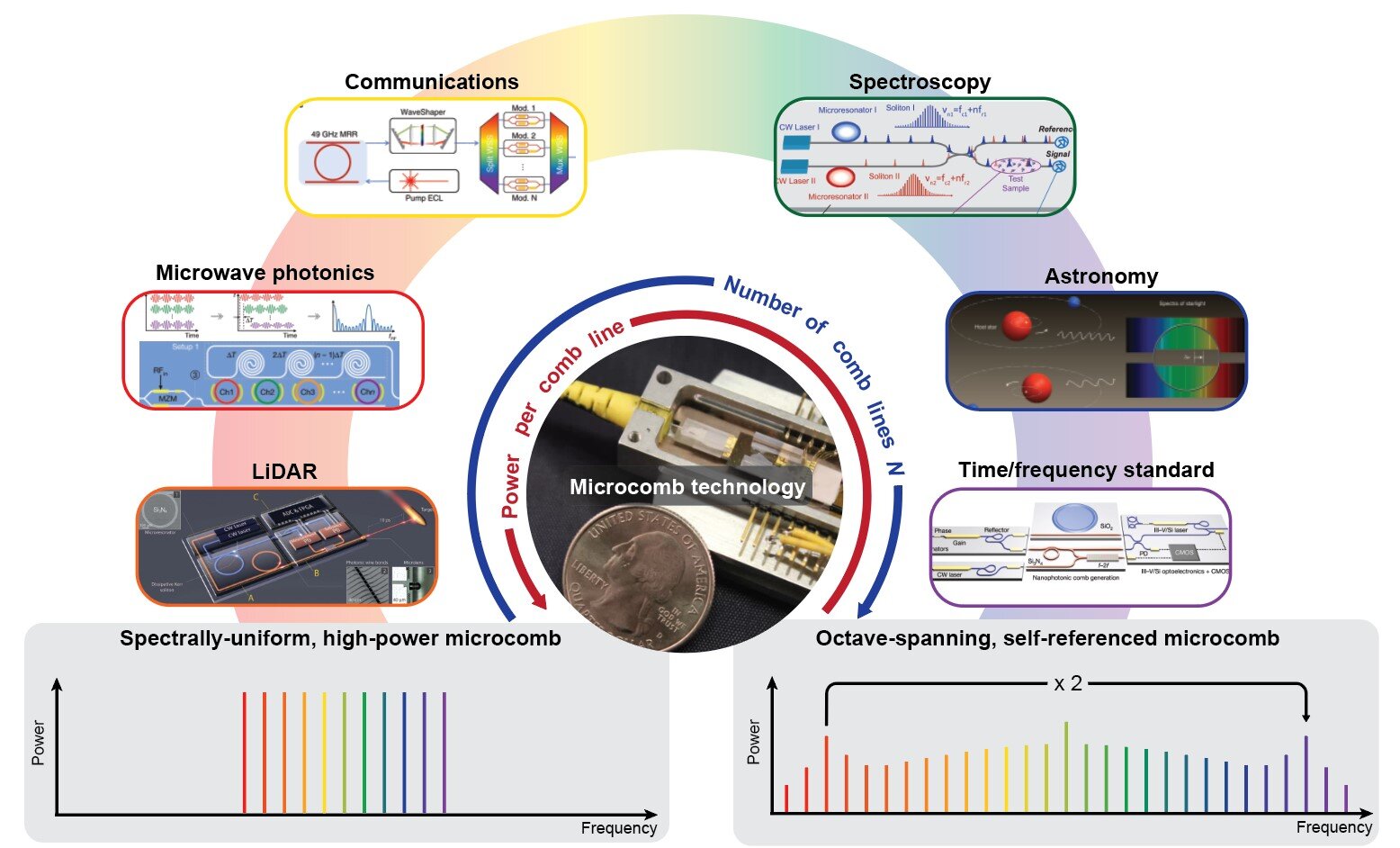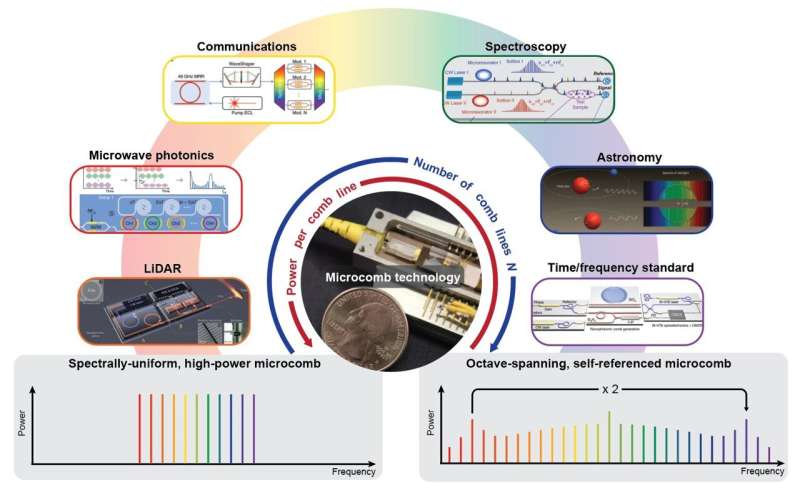
by Light Publishing Center, Changchun Institute of Optics, Fine Mechanics And Physics, CAS

Remember those big, clunky machines needed for super precise light measurements? Those days are fading thanks to tiny devices called microcombs. These chips can do the same job, but on a much smaller scale, opening doors for new applications.
Microcombs work by harnessing light in special microstructures to create a rainbow of precise colors, useful for various scientific tasks. Recent breakthroughs have made these microcombs much more efficient, converting more light into a useful rainbow than ever before. The work is published in the journal eLight.
This efficiency boost is like getting more power out of a smaller engine. It paves the way for building microcomb devices that are portable and easy to use outside of labs.
Microcombs are recognized for their outstanding properties, which have enabled a wide range of applications, including spectroscopy, optical frequency synthesis, astronomical calibration, compact atomic clocks, optical communications, LiDAR, and microwave photonics.
Ultralow-loss silicon nitride (Si3N4) waveguide technologies have facilitated the rapid transition from device-level demonstrations to system-level integration. These advancements pave the way for the mass production of compact OFCs suitable for deployment outside laboratory environments.
The efficiency of microcombs is a critical metric for their practical applications. Recent advancements have focused on improving efficiency through coupled resonators and broader pumping strategies. Notable progress has been made in generating flat-top microcombs, which distribute power evenly across the comb lines. This uniform power distribution is essential for modern communication systems and other applications that rely on consistent signal strength across multiple channels.
By addressing the limitations in these areas, researchers have significantly improved overall performance. Coupled microresonators have emerged as a promising approach, allowing for better energy flow and bypassing previous theoretical limits. These configurations, guided by the concept of general critical coupling, have demonstrated remarkable efficiency enhancements.
In addition to continuous-wave laser pumping, alternative pump schemes, including pulsed and parametrically-pumped microcombs, have shown enormous potential. These methods improve the temporal overlap between the pump and the soliton, enhancing efficiency.
Researchers are still working on perfecting microcombs, exploring different materials and ways to make them even more efficient. With continued progress, these tiny light combs have the potential to revolutionize various scientific fields.
More information:
Qi-Fan Yang et al, Efficient microresonator frequency combs, eLight (2024). DOI: 10.1186/s43593-024-00075-5
Provided by
Light Publishing Center, Changchun Institute of Optics, Fine Mechanics And Physics, CAS
Citation:
Powerful and compact optical frequency combs provide unique opportunities (2024, October 11)
retrieved 11 October 2024
from https://phys.org/news/2024-10-powerful-compact-optical-frequency-unique.html
This document is subject to copyright. Apart from any fair dealing for the purpose of private study or research, no
part may be reproduced without the written permission. The content is provided for information purposes only.